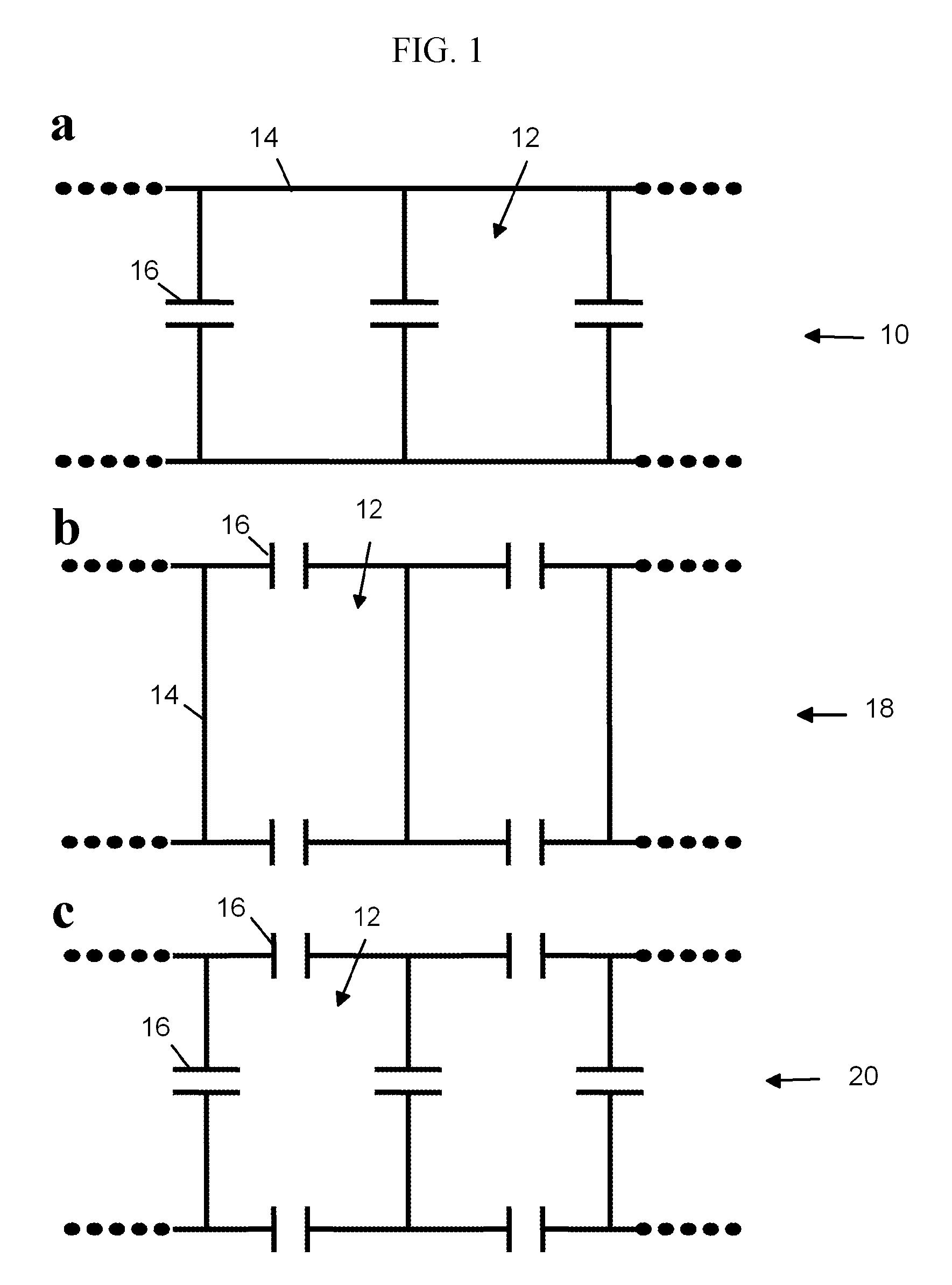Open-Shape Noise-Resilient Multi-Frequency Sensors
a multi-frequency sensor, open-shape technology, applied in the direction of instruments, magnetic measurements, measurement devices, etc., can solve the problems of endangering people in the vicinity, damaging the magnetic parts of studied objects, and undesirable use of external magnetic fields, so as to achieve reliable and rapid human body scanning and maximum efficiency and sensitivity
- Summary
- Abstract
- Description
- Claims
- Application Information
AI Technical Summary
Benefits of technology
Problems solved by technology
Method used
Image
Examples
Embodiment Construction
[0042] Referring now to the drawings, wherein like reference numerals refer to like parts throughout, there is seen in FIG. 1 the various possible arrangements of conductors and capacitors in the interconnected windows of the birdcage coils according to the present invention, and there is seen in FIG. 3 the basic inductively coupled elements with incorporated capacitors for TEM coils according to the present invention.
[0043] More specifically, there is seen in FIG. 1a a low pass birdcage coil 10 comprising a series of windows 12 formed by conductors 14 and capacitors 16. FIG. 1b depicts a high pass birdcage coil 18 having a series of windows 12 formed by conductors 14 and capacitors 16. Finally, FIG. 1c depicts a hybrid coil 20 having a series of windows 12 formed by capacitors 16. FIG. 2a through 2c depicts the various double turn birdcage coils 22, 24, and 26 (i.e., low pass, high pass, and hybrid) corresponding to single turn birdcage coils 10, 18, and 20. The corresponding vari...
PUM
 Login to View More
Login to View More Abstract
Description
Claims
Application Information
 Login to View More
Login to View More - R&D
- Intellectual Property
- Life Sciences
- Materials
- Tech Scout
- Unparalleled Data Quality
- Higher Quality Content
- 60% Fewer Hallucinations
Browse by: Latest US Patents, China's latest patents, Technical Efficacy Thesaurus, Application Domain, Technology Topic, Popular Technical Reports.
© 2025 PatSnap. All rights reserved.Legal|Privacy policy|Modern Slavery Act Transparency Statement|Sitemap|About US| Contact US: help@patsnap.com



